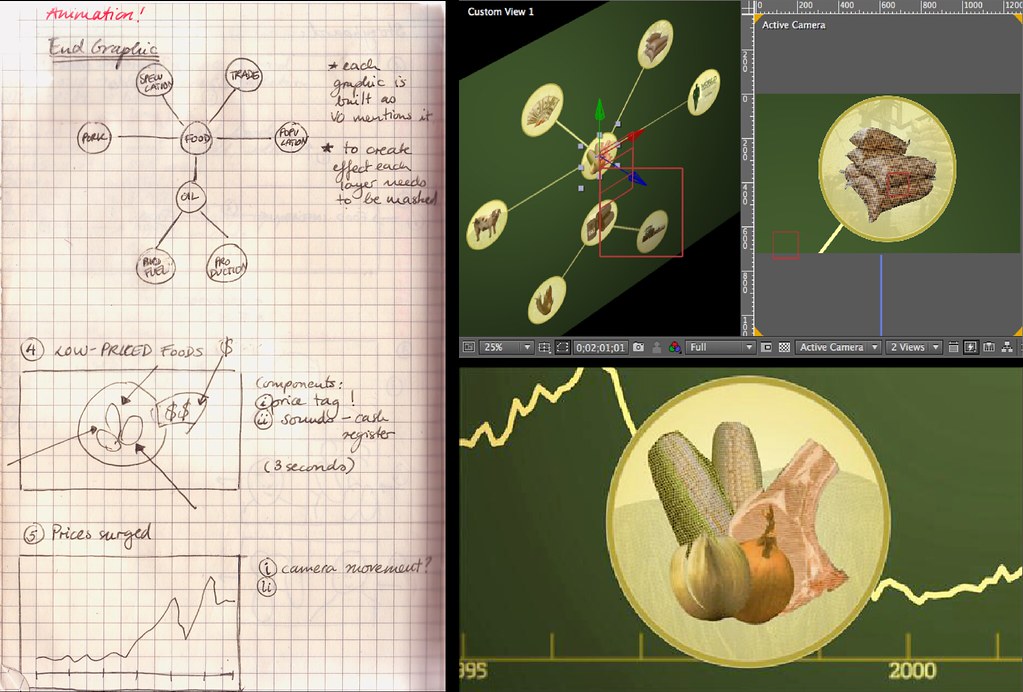 This is one of a series of blog posts from the first ONA class of MJ Bear Fellows describing their experiences and sharing their knowledge with the community. Fellow Lam Thuy Vo is an associate producer for National Public Radio’s Planet Money.
This is one of a series of blog posts from the first ONA class of MJ Bear Fellows describing their experiences and sharing their knowledge with the community. Fellow Lam Thuy Vo is an associate producer for National Public Radio’s Planet Money.
Ugh, the blog format. For a lover of long-form magazine stories and documentaries, I was never the biggest fan.
With blogs came shortened word counts, limited visual capabilities and a curtailed shelf life (although that might be arguable).
But necessity is the mother of invention, and there have been a number of folks who took the format, ran with it and converted me (which is good because I now work on a blog).
Short form vs. mini site
Here’s one of the hardest things I had to swallow. The kind of journalism I loved to do, the long-form multimedia projects and the mini-sites for special coverage, aren’t the way people enter a website anymore.

Less of this?
How we get to our reading and viewing material has changed. Big destination sites don’t garner the kind of audiences that a series of or even just one well-done shorter piece get.
Yes, long-form journalism — meaning longer articles — might have caught a second wind from the rise of the iPad, the Kindle and other tablets. But special mini-sites haven’t enjoyed the same renaissance — at least that’s what I gather from anecdotal evidence. These sites might not die, but they certainly are going to be rarer.
But just because my work is being parceled into bite-sized posts on online avenues doesn’t mean I have to compromise quality in reporting and multimedia storytelling, right? Here’s why.
A stage for experimentation
Some of the most interesting developments in our recent news gathering — from real-time coverage to more integrated interplay of multimedia elements and text — are perfect for blogs.
One of the first multi-format bloggers I started noticing was a former Wall Street Journal colleague Zach Seward.
Before starting at The Atlantic, the former WSJ social media editor caught my attention with playful posts like this one, titled “Everything the Internet Knows About Me (Because I Asked It To)” or this one, called “Listen to the Obama Campaign’s Soundtrack”.

Everything the Internet Knows about Zach Seward (The Wall Street Journal)
The beauty of these posts is that they are not necessarily bound to text, and they weigh each element equally. As someone who’s always worked on “art for stories,” it’s nice to see someone practice what we always preach: Treat all media equally and use each according to their strength.
Another great development on blogs that’s now gained enough traction to get the attention of the Pulitzer Prizes is live coverage. The Guardian was one of the first publications to fully embrace and then refine the art of live blogging, a news reporting format that has won more prominence with the rise of twitter.
One of the Guardian’s earliest live products, its soccer (or football) live blogs, is a great example of value-added live coverage. The writers are hilarious, well-informed commentators who offer a different view of the game while delivering basic information.
Sports events, awards ceremonies and other “low-pressure” live events also are a great training ground for live coverage of news. Live blogging later became a central tool for the Guardian’s coverage of the Arab Spring, and transformed it into both a news delivery system and a crowd-sourcing platform.
A more traditional print reporter once told me that blog posts are for reporters to “dump” into whatever didn’t make it into the “actual” story, which reduces blogs to the function of traffic-generating byproducts. But I see a blog as a vehicle for experimentation, integrated, multiple-platform storytelling — a tool with specific strengths, useful for certain stories.
Serial blogging
Blogs lack depth, some would say. And while you might not get as much out of a 300-word post as you would a 5,000-word article, blogs do offer room for developing a deeper understanding of a story or subject over time.
Serial coverage of a subject can unravel nicely over a blog, which can provide more flexibility to react to recent developments. When we think of superficial blogs, we think of posts that “recycle” other people’s reporting. And while that is part of the blogosphere, there’s some great original reporting in blogs.
The Atlantic, for instance, is rolling out a series on spending, which combines smart reporting with graphics and guest entries. On some level, this is just a way to parcel out great coverage of a subject.
Maybe my long-form projects don’t have to die. They just have to be repackaged.
